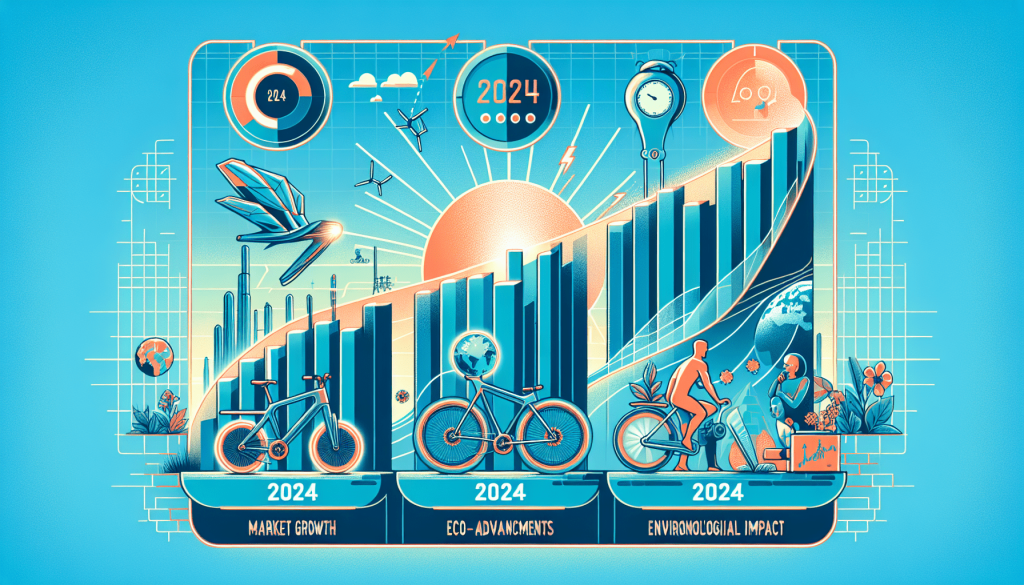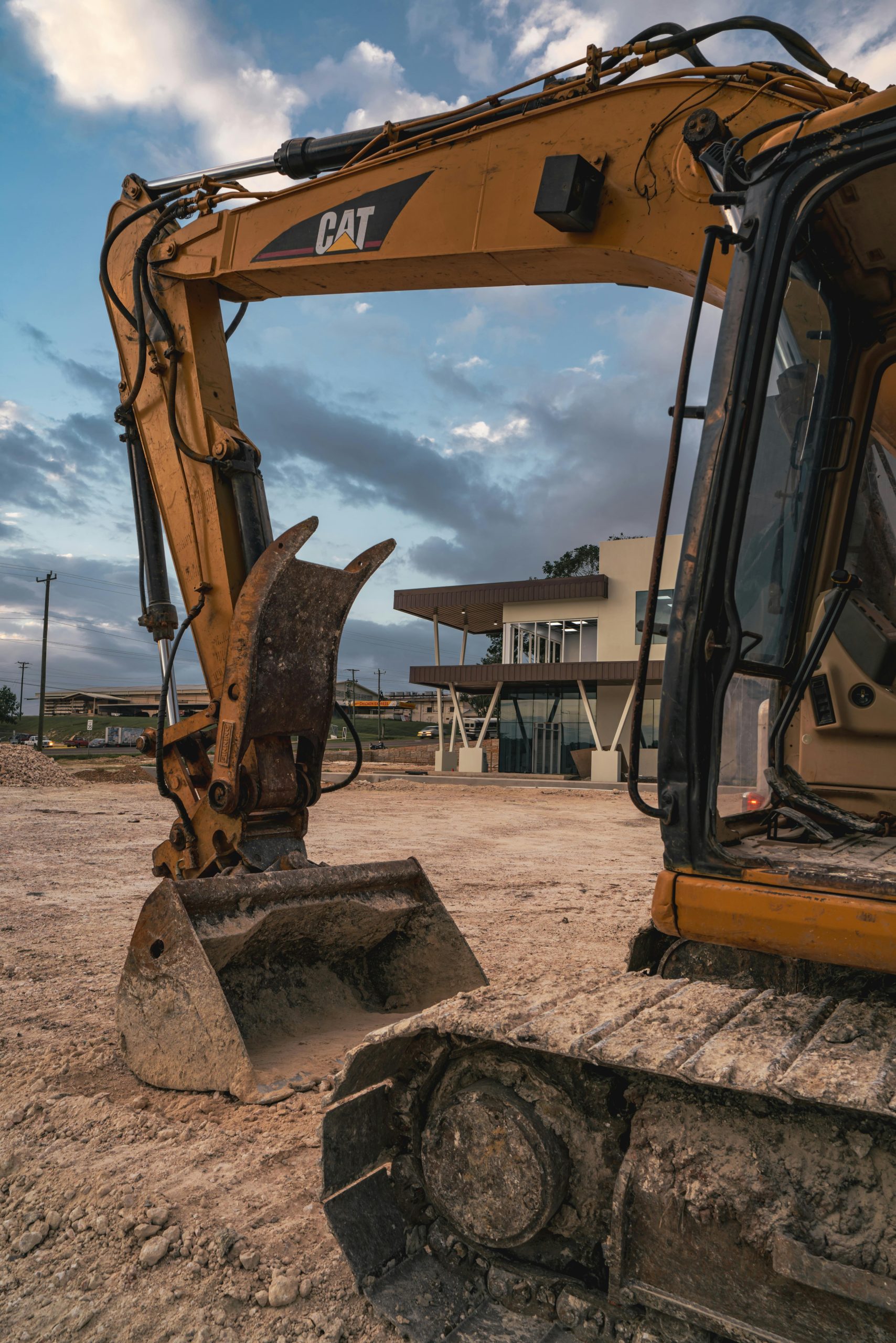What Is The Outlook For The Bicycle Industry In 2024?
Imagine cruising down a picturesque road, feeling the wind in your hair and the sun on your face as you pedal your way to your destination. It’s a scene that evokes a sense of freedom, health, and environmental consciousness. But what does the future hold for the bicycle industry? Will it continue to grow and flourish, or face challenges in the coming years? In this article, we will explore the outlook for the bicycle industry in 2024 and examine the factors that could shape its future. Get ready to embark on a journey through the exciting world of bicycles!

Overview of the Bicycle Industry
The bicycle industry is a thriving sector that has experienced significant growth and evolution over the years. It has become a crucial part of the transportation and recreational landscape, offering a sustainable and healthy mode of transportation and leisure activity. In recent years, the industry has witnessed a surge in demand, driven by various factors such as increasing health consciousness, growing environmental concerns, advancements in technology, and changing consumer preferences.
Market Size and Growth
The bicycle industry has witnessed substantial growth in recent years, with a global market size expected to reach a value of $62.39 billion by 2027, according to a report by Grand View Research. This significant growth can be attributed to multiple factors, including rising consumer awareness regarding health and fitness, increased adoption of bicycles for daily commuting, and a growing preference for eco-friendly transportation options.
Key Players
The bicycle industry comprises a wide range of manufacturers, retailers, and service providers. Some of the key players in the market include well-established brands such as Giant Manufacturing Co., Ltd., Trek Bicycle Corporation, Specialized Bicycle Components, and Cannondale Bicycle Corporation. These companies have been at the forefront of innovation and have successfully built a loyal customer base with their high-quality products and excellent customer service.
Current Trends
The bicycle industry is constantly evolving, keeping up with the changing demands and preferences of consumers. One of the prominent trends in recent years is the increasing popularity of electric bicycles or e-bikes. These bikes offer an electric motor that assists the rider, making it easier to tackle steep hills and travel longer distances. Another trend is the emergence of smart bicycles, equipped with innovative features such as GPS navigation, fitness trackers, and automatic lighting systems. Furthermore, there has been a rise in the demand for connected features in bicycles, enabling riders to track their performance, receive notifications, and even connect with other riders through smartphone apps.
Technology and Innovation in Bicycles
Technological advancements have greatly influenced the bicycle industry, driving innovation and enhancing the overall cycling experience. These advancements have led to the development of electric bicycles, smart bicycles, and connected features that have revolutionized the way people ride and interact with their bikes.
Electric Bicycles
Electric bicycles, or e-bikes, have gained significant popularity in recent years. These bikes are equipped with an electric motor that assists the rider’s pedaling, providing an extra boost of power. This feature is especially beneficial for individuals who may have physical limitations or need assistance while riding uphill. E-bikes offer a more accessible and inclusive mode of transportation, encouraging more people to take up cycling as a means of commuting or leisure.
Smart Bicycles
Smart bicycles incorporate various technological features that enhance the overall riding experience. These bikes are equipped with integrated GPS navigation systems that provide turn-by-turn directions, making it easier for riders to explore new routes and navigate unfamiliar areas. Additionally, smart bicycles often come equipped with fitness tracking capabilities, allowing riders to monitor their heart rate, distance traveled, and calories burned. Some models even offer automatic lighting systems that adjust based on the surrounding light conditions, ensuring increased visibility and safety.
Connected Features
With the rise of the Internet of Things (IoT), bicycles have become connected devices, enabling riders to stay connected and receive real-time information. Many bicycles now offer connectivity to smartphone apps that allow riders to track their performance, set goals, and even compete with friends. These connected features provide riders with valuable insights into their cycling habits, helping them improve their overall fitness and performance.
Environmental and Sustainable Factors
The bicycle industry plays a crucial role in promoting sustainability and reducing carbon emissions. As concerns about the environment and climate change continue to grow, more individuals are turning to bicycles as an eco-friendly alternative to traditional modes of transportation.
Growing Concern for Sustainability
There is a growing awareness among consumers about the impact of their choices on the environment. As a result, many people are opting for bicycles as a sustainable mode of transportation. Bicycles produce zero emissions and have a minimal carbon footprint compared to cars or motorcycles. By choosing to ride bicycles instead of using fossil fuel-powered vehicles, individuals contribute to reducing air pollution and greenhouse gas emissions.
Promotion of Cycling Infrastructure
To encourage more people to adopt cycling as a means of transportation, there is a need for well-developed cycling infrastructure. Governments and city authorities are increasingly investing in the construction of dedicated cycling lanes, bike-sharing programs, and bicycle parking facilities. These initiatives aim to improve safety for cyclists and make cycling a more convenient and accessible option for daily commuters. The development of bicycle-friendly infrastructure is vital in promoting the widespread adoption of bicycles and creating a culture of cycling within communities.
Government Initiatives and Policies
Governments around the world are implementing various initiatives and policies to promote cycling and encourage sustainable transportation. Some regions offer financial incentives and subsidies to individuals who purchase bicycles or e-bikes, making them more affordable and accessible. Furthermore, governments are actively involved in promoting cycling events and campaigns to highlight the numerous benefits of cycling and raise awareness about the importance of sustainable transportation.
Impact of COVID-19
The COVID-19 pandemic has had a significant impact on various industries, including the bicycle industry. While the initial months of the pandemic led to disruptions in production and decreased sales, the industry quickly rebounded and experienced a surge in demand for bicycles.
Initial Setbacks and Recovery
During the early stages of the pandemic, the bicycle industry faced numerous challenges. Supply chain disruptions, factory closures, and limitations on movement heavily impacted production and distribution. Additionally, with people adhering to lockdown measures and restrictions on outdoor activities, the demand for bicycles decreased temporarily.
However, as lockdown measures eased and people sought alternative transportation options to avoid crowded public transport, the bicycle industry witnessed a strong recovery. The industry experienced a surge in demand as individuals turned to bicycles for commuting and recreational purposes. This increased demand created new opportunities for manufacturers and retailers, pushing them to adapt to the changing landscape quickly.
Increased Demand for Bicycles
The pandemic highlighted the importance of bicycles as a safe and sustainable mode of transportation. Concerns over social distancing and hygiene practices drove many individuals to switch from public transport to bicycles. Bicycles provided a convenient means of travel while minimizing the risk of exposure to the virus. As a result, the demand for bicycles skyrocketed, leading to supply shortages and waiting lists in some regions.
Shift in Consumer Behavior
The COVID-19 pandemic has also led to a shift in consumer behavior and attitudes towards cycling. People have realized the numerous benefits of cycling, such as improved physical health, reduced carbon footprint, and the ability to maintain social distance while commuting. This increased awareness and positive attitude towards cycling are expected to have a long-lasting impact, as more individuals are likely to continue cycling even after the pandemic subsides.

Changing Consumer Preferences
Consumer preferences in the bicycle industry have evolved over time, driven by various factors such as health and fitness concerns, recreational pursuits, and a desire for specialized products.
Focus on Health and Fitness
In recent years, there has been a growing emphasis on health and fitness, with individuals seeking ways to incorporate exercise into their daily routines. Cycling has gained popularity as a low-impact cardio exercise that offers numerous health benefits. Many individuals are turning to bicycles as a means of achieving their fitness goals and leading a healthier lifestyle.
Rise of Recreational Cycling
Recreational cycling has witnessed a surge in popularity in recent years, with more individuals embracing cycling as a leisure activity. People are exploring different terrains, participating in cycling tours, and finding joy in exploring their surroundings on two wheels. This shift towards recreational cycling has driven an increased demand for bicycles that are specifically designed for off-road trails, mountain biking, or long-distance touring.
Preference for Specialty Bicycles
Consumers are becoming more discerning and specific in their bicycle preferences, leading to an increased demand for specialty bicycles. Whether it’s road bikes for endurance riding, city bikes for commuting, or hybrid bikes for versatile use, individuals are seeking bicycles that cater to their specific needs and preferences. This trend has given rise to a greater variety of bicycles on the market, offering options for different riding styles, terrains, and personal preferences.
Global Market Opportunities
The bicycle industry presents significant opportunities for growth and expansion, particularly in emerging markets and through the rise of bike-sharing programs and e-commerce.
Emerging Markets
Emerging markets, such as India, China, and Brazil, offer immense potential for the bicycle industry. These regions have large populations and rapidly growing urban centers, where bicycles can serve as a practical and affordable mode of transportation. As economic growth continues to improve living standards and disposable incomes, the demand for bicycles is expected to rise significantly.
Rise of Bike-Sharing Programs
Bike-sharing programs have gained popularity worldwide, providing individuals with access to bicycles for short-distance trips. These programs have been particularly successful in densely populated urban areas, where parking and congestion can be major challenges. Bike-sharing programs offer convenience, affordability, and flexibility, making bicycles a viable transportation option for individuals who may not want to own a bicycle. This trend is likely to continue expanding, with cities investing in bike-sharing infrastructure and technology.
Growth in E-commerce
The growth of e-commerce has opened up new avenues for the bicycle industry. Online platforms allow consumers to browse and purchase bicycles from the comfort of their homes, offering convenience and a wider range of options. E-commerce has also facilitated the growth of direct-to-consumer brands, allowing manufacturers to reach a global audience without relying solely on traditional retail channels. The continued growth of e-commerce presents exciting opportunities for both established brands and new players in the industry.

Challenges and Potential Threats
While the bicycle industry offers numerous opportunities for growth, it also faces certain challenges and potential threats that need to be addressed to ensure continued success.
Competition from Alternative Transportation Modes
The bicycle industry faces competition from alternative transportation modes such as electric scooters, motorcycles, and even ridesharing services. These alternatives offer convenience and speed, posing a challenge to traditional bicycles. To stay competitive, the bicycle industry needs to continue innovating and evolving its products to meet consumers’ changing needs and preferences.
Supply Chain Disruptions
The bicycle industry heavily relies on global supply chains for raw materials, components, and manufacturing. Disruptions in these supply chains, such as trade disputes or natural disasters, can impact production and distribution. The COVID-19 pandemic highlighted the vulnerabilities of global supply chains, underscoring the importance of diversification and localized production to mitigate risks.
Safety and Infrastructure Concerns
Safety concerns and inadequate cycling infrastructure can deter individuals from adopting cycling as a regular mode of transportation. Accidents involving cyclists, lack of dedicated cycling lanes, and inconsistent traffic regulations pose safety risks. To encourage more people to adopt cycling, governments and city planners need to invest in creating safe and well-connected cycling infrastructure, ensuring the safety of cyclists and improving their overall experience.
Regulatory and Policy Landscape
Regulatory frameworks and government policies play a crucial role in shaping the bicycle industry and promoting cycling as a sustainable mode of transportation.
Bicycle Safety Regulations
Many countries have established safety regulations and standards for bicycles, ensuring that they meet specific requirements. These regulations typically cover aspects such as lighting, reflectors, brakes, and frame construction. Such safety regulations are crucial in ensuring the reliability and safety of bicycles, protecting both riders and pedestrians.
Incentives for Bicycle Adoption
Governments worldwide are introducing incentives and subsidies to encourage the adoption of bicycles. These incentives can take the form of tax benefits, financial reimbursements, or subsidies on the purchase of bicycles or e-bikes. By making bicycles more affordable and accessible, governments aim to incentivize individuals to choose cycling as a sustainable mode of transportation.
Government Support for Cycling Events
To promote cycling culture and generate awareness about the benefits of cycling, governments often support and sponsor cycling events and initiatives. These events can range from local bike races to national cycling campaigns, aimed at encouraging widespread participation and fostering a sense of community among cyclists. Government support for cycling events helps create a positive perception of cycling and inspires more people to take up the activity.

Influence of Social Media and Influencers
Social media platforms and digital influencers have become powerful tools in shaping consumer behavior and promoting bicycling culture.
Promotion of Bicycling Culture
Social media platforms such as Instagram, YouTube, and Facebook are filled with content that promotes bicycling culture. Cyclists, both professional and recreational, share their experiences, tips, and inspirations on these platforms, creating a vibrant and engaged community. The online presence of cycling enthusiasts has played a significant role in popularizing bicycling and highlighting its benefits, ultimately encouraging more individuals to embrace cycling.
Impact on Consumer Behavior
Influencers, athletes, and celebrities who are passionate about cycling play a crucial role in shaping consumer behavior. Their endorsements and recommendations can significantly influence consumers’ decisions when it comes to purchasing bicycles and related gear. Brands often collaborate with influencers to create engaging content, reach a wider audience, and inspire individuals to explore cycling as a lifestyle choice.
Collaborations and Partnerships
Social media has facilitated collaborations between bicycle brands and influencers, resulting in innovative marketing campaigns and partnerships. Influencers often act as brand ambassadors, endorsing products and sharing their experiences with their followers. These collaborations help increase brand visibility and create a strong connection between the brand, the influencer, and the audience.
Future Growth Predictions
The future of the bicycle industry looks promising, with ample opportunities for growth and innovation.
Expanding Market Opportunities
The bicycle industry is poised for further expansion, driven by increasing urbanization, environmental concerns, and changing consumer preferences. As more cities invest in cycling infrastructure and governments continue to promote sustainable transportation, the demand for bicycles is expected to grow steadily. Furthermore, as technological advancements continue to enhance the cycling experience, manufacturers will have the opportunity to develop new and innovative products and cater to a wider audience.
Technology Advancements
Technology will play a pivotal role in shaping the future of the bicycle industry. Advancements in electric motors, battery technology, and connectivity will further improve the performance and functionality of bicycles. Additionally, as the Internet of Things (IoT) continues to evolve, bicycles will become even more connected, offering riders a seamless and integrated experience. The integration of artificial intelligence and machine learning algorithms may also revolutionize aspects such as bike maintenance, performance optimization, and rider safety.
Innovative Business Models
The bicycle industry will also witness the emergence of innovative business models. Direct-to-consumer brands, enabled by e-commerce and social media, will continue to gain traction, challenging traditional retail channels. Furthermore, subscription-based services and bike-sharing platforms will offer consumers flexible and affordable options for accessing bicycles. These innovative business models will cater to the evolving needs and preferences of consumers, ensuring sustained growth in the industry.
In conclusion, the bicycle industry is experiencing a period of rapid growth and transformation. With increasing concerns for sustainability, rising demand for health and fitness solutions, and technological advancements driving innovation, the industry is well-positioned for future success. While challenges such as competition, supply chain disruptions, and safety concerns need to be addressed, the bicycle industry has immense potential for further expansion. By capitalizing on emerging market opportunities, embracing technological advancements, and catering to changing consumer preferences, the bicycle industry is set to thrive and continue its crucial role in promoting sustainable transportation and a healthier lifestyle.








